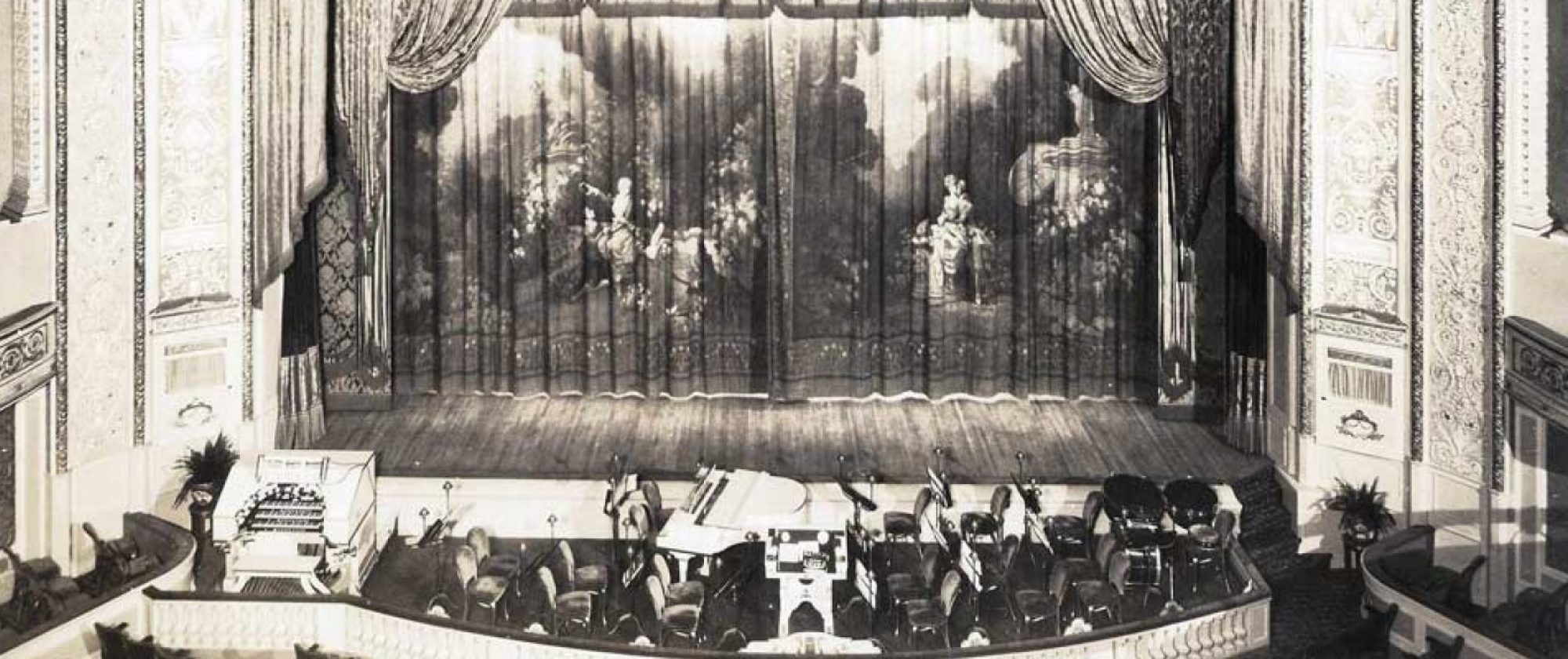One made an announcement about the act following, Eva Shirley and Co. which consists of a five piece jazz orchestra and Al Roth, that on account of the baggage tie-up the act would appear in street costume. Miss Shirley sang her number, assisted by the orchestra on the rostrum – and was well liked. The hit of the performance was Roth in his own conception of a “shimmy shaker.”
Then came Dunham and Williams, and these two two-hundred pounders proceeded to mop up their clever act. Both these men can sing – one with his large voice was forced to take three encores for one number. The act finished with the boys taking several bows.
The Three Lees opened the show in a clever juggling act, which carries good comedy and a good routine. The blackface comedian drew some laughs with his hat juggling, in which he uses the audience to assist him.
Libonati is playing a return engagement, having played here not so long ago. He is easily the master of the xylophone, for when he plays “jazz” everyone sways. He was generous with his encores, and the more he gave them the more they wanted.
Alice Sheldon and Lucille Daily, two little women with good personalities and no exciting looks, wandered amiably and fairly until their closing number, “Sweetheart Blues,” which knocked the house edge-ways.
Frank Conroy, after his stuff in “one” with Irving O’Hay, goes into full stage for a farce spiritualist scene. It is funny after a fashion but neither witty nor inherently humorous. He sloughs the darky character entirely, though he still assumes the weak-kneed postures of his Conroy and Le Maire days. The laughs were at times big, but were forced on cheap puns and frankly reaching after artificial comedy; propped up by aids in physical and vocal manifestations identified with the seamiest order of burlesque shows of a generation ago and old-time “nigger acts.” The set is tawdry and flimsy, expansive.
Florence Tempest is the added feature, and this dainty girl is not vastly impressive to this clientele, but Alton and Allen, marvelous dancers, and George Harriss, her corking pianist, carry her over. This is a following that does not rise to the peculiar type of elegance and chic which Miss Tempest personifies, which make her valuable in discriminating houses, but which disadvantage her here. At that the turn as a whole makes the requisite showing for spot and billing.
The dancing Humphreys earned far more recognition than the usual dancing turn of this kind gets for itself. Both of these young people rank well on the appearance counts and they dance as though they enjoy it, with gleaming smiles and flashing eyes, they keep the audience pulling for them all the time.
Ray Conlin and his ex-soldier dummy, drew the number two spot and got away well. Conlin’s ventriloquial efforts centered on laugh rather than difficult feats of voice control, and the act went big.
Milt Collins got plenty of laughs from the proletarians on his Cliff Gordon’s act, the apostrophe of the possessive being not misplaced, for he uses not only the late comedian’s manners, but his closing gag about wives going on strike and scabs taking their places, and several of his best crackers intact; his start is unpropitious, due to poor taste to comedy, anent the origin of the Stars and Stripes, in which he says (and with a German accent!) that in 1776 our soldiers had ammunition and no ambition, but a woman came along with a red, white and blue petticoat, and when she waved it our soldiers got “ambition,” and they have followed the petticoats ever since – rather broad wit on such a delicate subject. Collins got laughs because most of his stuff was punchy hokum; at the last show Monday he did not get enough applause to warrant taking one bow.
